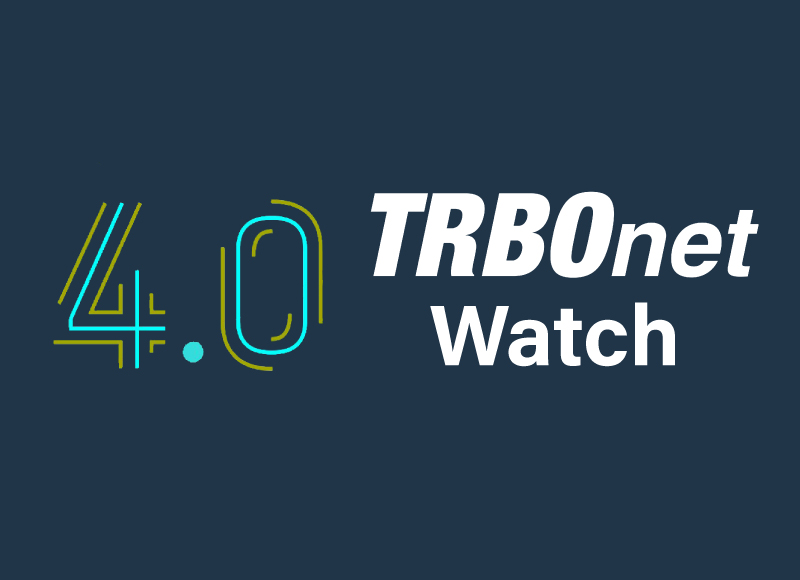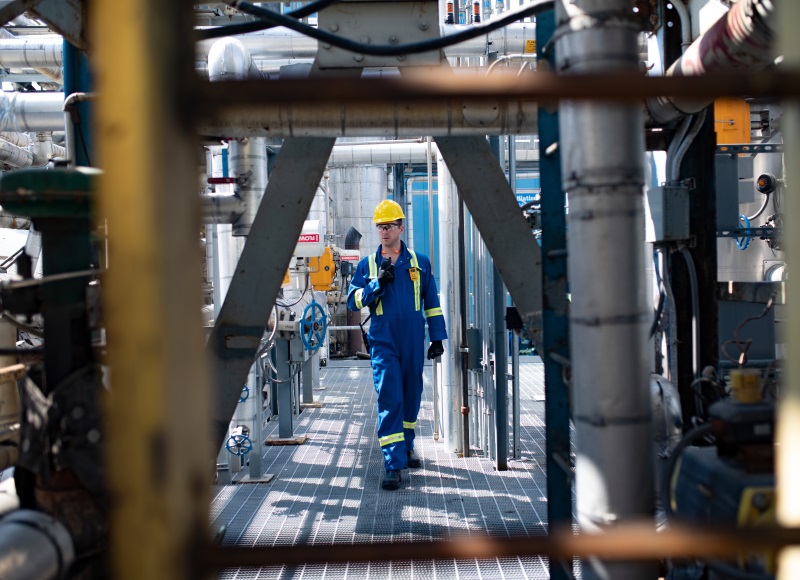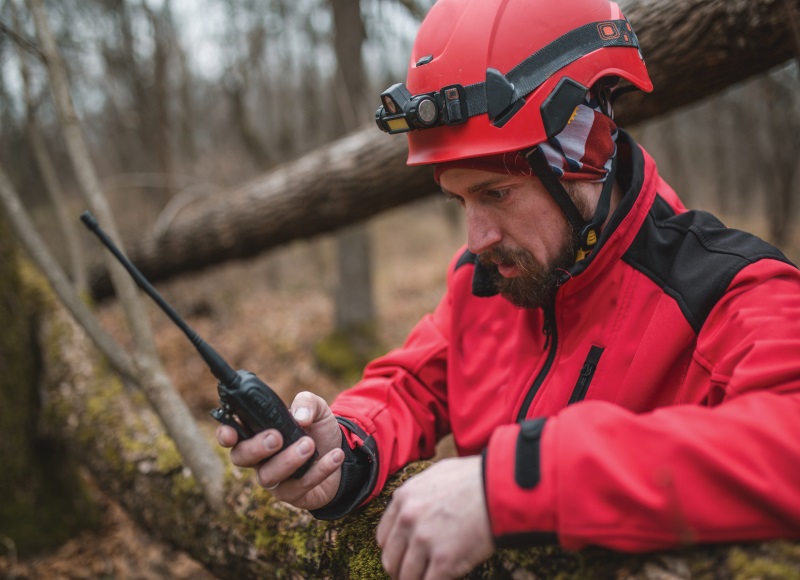

White Paper – Resilience Levels in Business Radio Systems The FCS 5-Level Resilience Assessment Scheme
FCS2020: November 2017 V1.0
Professional Radio communication has been used to achieve operational efficiency gains and improve safety arrangements for staff for many years. This use in professional operations arises from the fact that it works when it is needed. This extreme reliability happens because it is very resilient.
In recent years, low-resilience radio communication systems have been increasingly used to support services and operational facilities that obviously demand high levels of resilience. The situation is becoming intolerable with serious safety risks being introduced that are in apparent contravention of Health & Safety legislation and loss of efficiency, now commonplace. It is clear that now some organisations are completely unaware of the risks they are needlessly running
Much has been written on resilience in telecommunication systems. However, there is much less available on professional radio communications. This tends to leave the subject of resilience in radio communication systems less easy for purchasing professionals and other auditors to address. This FCS Code of Practice, therefore, seeks to provide non-technical guidance to professionals seeking to purchase, insure, audit or incorporate radio communications in their operations.
The FCS concern over this topic is heightened by reports of completely unsubstantiated claims made by some actors that a solution is “fully resilient” when it clearly isn’t. And of purchasers being deceived into purchasing a system that sometimes does what the supplier said it would do but doesn’t work often enough. And is therefore probably illegal to use under Health and Safety legislation in the environment for which it was purchased. An issue which is further compounded where the resilience requirement is undefined — and so legal redress is very hard to achieve.
The FCS has created an easy process that professionals can use to formulate contractual requirements that state resilience objectives against clear criteria. If requirements in each of the various categories are met, this will result in a far better solution that meets the need without being excessively prescriptive. This same process should also facilitate discussions with potential solution providers, even in the very early stages of negotiation.
This easy process is called the 5-Level Resilience Assessment Scheme. It seeks to equip purchasing professionals with a consistent, unambiguous and easy-to-use tool to construct contracts that result in purchases that meet all the resilience requirements (which include legal requirements) in the most economical way possible.
This same 5-Level Scheme will assist other professionals to audit and assess resilience in their activities also. It may provide important information to professionals seeking answers to questions they may raise during investigations. These questions could include “why didn’t help arrive when it was called for?”
Introduction
Resilient systems form an essential part of the successful continuation of our civilization. These systems work well. But, because they do work, we rarely even think about what makes them so reliable.
We get water from the tap or drive our cars and expect the car steering and brakes to function properly when used. We go to the shops and get our food and other goods there. We watch terrestrial TV and are appalled when, once every so many years, the service isn’t available exactly when we want it. We make a telephone call on a standard telephone connected by a land-line and if our call isn’t answered, we always conclude that the person we are trying to reach is not there. We don’t conclude the telephone system has failed.
We, therefore, experience and appreciate highly resilient systems in our daily lives. But we also experience less resilient systems and usually complain about them to each other and often to the provider. As our lives get more complex, we are offered more and more new services that are supported by less resilient systems.
These services are supported on systems that are deliberately designed to work as and when they can on a “Best Efforts” basis. This means that the system is what it is: if it works when you want to use it, all well and good. But if for some reason it doesn’t work on that occasion then, that is your problem. It would be unfair in this paper to list examples. However, a moment’s reflection by the reader will result in a significant number of examples they have recently experienced. It is suspected that every reader has experienced a noticeable system failure of some kind within the last seven days.
Radiocommunications is no different to any other sector. There are services and operational facilities that are important to achieving a goal at the time it is required and those that are less important in that they are not required to work when and where needed on every occasion. Perhaps a second attempt at communication an hour later is acceptable.
The public experience of radio communications is mostly through consumer-orientated public mobile phone networks. This highly successful sector uses systems that are not designed with “resilience” as the highest priority but are instead intended to maximize overall throughput of communications traffic. The types of communications they seek to support should not be “critical”. The occasional failure to play a multi-player football game on one’s mobile is not automatically a genuine crisis, let alone life-threatening. So, whilst inconvenient and irritating when it fails, overall, the consumer communications sector provides an excellent service for what it is intended to support. And it does so for millions of users, every day. It is, therefore, highly successful and valuable service in relation to the communication types it is intended for.
The use of two-way radio communications for operational purposes is a completely different subject. The whole environment is much more intense in terms of the real importance of failure. Operational radio communications involved with important systems has been clearly differentiated from consumer use of radio from the outset. As noted above, both are equally valid approaches and provide a suite of services that the end-user values. However, they address quite separate environments.
In general, the public is rarely even aware that such communication is actually going on, let alone has direct experience of it. The systems are designed differently to meet different specifications and operate in different ways. The users are similarly in a completely different environment. Many such operational users owe their jobs to the efficiency gains achieved by these operational networks. They may even reflect on this and realise that they also owe their safety to these radio networks.
Much of the specification of a radio system is amenable to common sense considerations. You can easily work out how many units are needed and what the features you need are, for example.
It gets much more difficult when you look at the fundamentals such as “will it work when the users need it to work” and similar questions. That sort of question is tied up with the complicated subject of “Is the system sufficiently resilient?” and the closely related “How do I know the supplier is telling me the truth when he/she says it is resilient?”
But, with all the complication surrounding the subject of “Resilience”, how does a busy purchasing professional (say) seeking to obtain a radio communication solution for an operational purpose, decide which level of resilience is required? More importantly, how do they know that the proposed “solution” will meet the operational requirement and work properly in reasonably foreseeable safety-related situations? And how do they construct a contract that gives them redress if it isn’t good enough? Currently, this is far from obvious.
Deciding on a Need for Resilience
In general, purchasing professionals will seek to provide the necessary radio communications facilities to support their organisations’ operations at the most economical cost. Insurance professionals and the Health & Safety Executive will want to know how likely the system is to support the desired communications (for example as part of investigations following accidents).
In doing so there are a number of considerations that apply.
Legal obligations towards employees
Addressing reasonably foreseeable situations
Operational efficiency (including reducing operational costs)
The appropriate level of resilience to meet the needs
Some simplified indicative cases (based on real instances) may be useful to consider at this stage.
Case 1 – Security at a Site
Take the case of a company on an industrial estate. The site is guarded by a security guard who patrols in a shift pattern with others, providing security 24Hrs a day. The guards have back-up in the event of an incident that they can call upon using their radios.
The radiocommunication services issued to the security guards are not resilient against power failure (even though the company thought they were).
The site is vulnerable to attack by criminals who can interrupt the mains power (not that hard to do). The criminals can then overcome the guard and have enough time to break into any company office they choose taking whatever they want.
Case 2 – Lone-Worker Safety
A well-established company employs several people, some of whom work with machinery in machine sheds. However, at times (in these days of increased cost awareness), there may be some staff close to these machines who are alone for relatively short periods (an hour a day, say).
The accident rate is so low as to be almost non-existent but as this is machinery, the danger is ever- present and well understood.
One day, a nearby machine fails (catastrophically) and a member of the staff is hurt, incapable of moving and bleeding quite badly. He or she tries to call for assistance, but the radio system was purchased when the staffing level was higher and colleagues may have been expected to always be on hand to give assistance. Thus, the radio scheme was only specified for reporting status, progress and stock control in routine situations. No upgrade of the radio system was undertaken to account for the changing circumstance of increased instances of lone-working staff close to the machines and the implications that has.
On this occasion, the system is not functioning and so cannot support the call for assistance made by the operative before blacking-out and the personal mobile phone he or she happens to have with him, never works in the machine shed and anyway, he or she couldn’t operate the device in their injured state, so the worker dies.
These cases are intended not only to show what is needed from the radio system in situations that could happen but also to demonstrate that it is not sufficient to cover the known operational situations but to also accommodate situations that are reasonably foreseeable. Both cases show negligence which the safety authorities would doubtless wish to consider further.
Absolute Resilience Obligations
Many organisations and situations are subject to absolute resilience obligations. Examples include:
Radiocommunications supporting work on the electricity supply systems have a power continuity absolute requirement that may soon be increased to 7 days without mains
Some environments may include operation in explosive atmospheres
Similarly, radio operation around flammable liquids requires compliance to associated
These requirements are closely defined and not subject to negotiation. Accordingly, there are no decisions that have to be made: the equipment and system purchased simply has to meet the regulations and so there is little point in applying an assessment process to them.
Legal Measures to Consider with Resilience Levels in Business Radio Systems
This guidance does not seek to provide a comprehensive analysis of the legal position regarding the provision of suitable radio equipment that will enable your company to meet its obligations towards safety. Management teams are encouraged to investigate the law if they are not already fully aware of it. However, in simple terms:
The 1974 Health and Safety at Work Act states under the General Duties:
General duties – General duties of employers to their employees. It shall be the duty of every employer to ensure, so far as is reasonably practicable, the health, safety and welfare at work of all his employees.
PART II GENERAL
Suitability of work equipment
Every employer shall ensure that work equipment is so constructed or adapted as to be suitable for the purpose for which it is used or provided.
- In selecting work equipment, every employer shall have regard to the working conditions and to the risks to the health and safety of persons which exist in the premises or undertaking in which that work equipment is to be used and any additional risk posed by the use of that work
- Every employer shall ensure that work equipment is used only for operations for which, and under conditions for which, it is#
- In this regulation “suitable” means suitable in any respect which it is reasonably foreseeable will affect the health or safety of any
The implication of these legal requirements is that there is an obligation that the equipment provided must have been selected by the employer to be suitable for the purpose, including safety matters. The law also extends “suitable” to include any respect which is reasonably foreseeable.
It is no good giving the staff equipment to improve their safety if there is an unacceptable risk that it won’t work when they need it. It is worth asking how much risk does a company expose itself to if it provides staff with unsuitable equipment that purports to be for their safety, but which is far from reliable while there is available much better equipment they could have bought just as easily.
The business environment is changing. There is now a clear tendency towards periods of staff lone-working or even complete lone working. Before, there may have been colleagues ‘close at hand’. This has changed the required safety arrangements such that professional-standard radio equipment is likely to form a very important part of the safety arrangements in an increasing number of situations. Accidents while working alone can reasonably be foreseen. And so, some form of radiocommunication that can be relied upon by the injured party to summon assistance is now necessary, where before reliance could be placed on action by colleagues who are close by and could provide assistance quickly.
Not all equipment is suitable for worker safety applications. The FCS urges professionals to make sure that their equipment is suitable.
What Does the Radiocommunication System Need to Do?
When purchasing a radiocommunication system, it will prove necessary for the company to identify what actions the radio system will be required to support and how. Then, the requirements should be further refined to include how much of such communication there will be and how many people will be involved and where they will be.
However, because these communications are for operational purposes, it will be necessary to characterize them in terms of how important they are and therefore develop a view on what type and level of failure can be tolerated. A key question then is “will the equipment work when we need it to work or is there an unacceptable risk it will not work?” This is a surprisingly difficult question. At the same time, over-specification can be expensive.
Therefore, your first question must be about whether the application for which you are buying the system needs a resilient solution at all. And if it does, what level of resilience is necessary.
The FCS 5-Level Scheme seeks to help professionals to identify the right level of resilience for their circumstances. Not more. Not less.
What are the Resilience Levels in Business Radio Systems?
At its simplest level, resilience in a radio communications system is its overall ability to provide the required functionality when and where it is needed.
Obviously, there are many things that affect this. There are relevant questions like:
Does it cover the geographical area you need it to cover?
Does it work if there is an interruption in mains power?
Might it been taken down to a non-operational state for maintenance when you need it?
Will it be destroyed by a lightning strike?
Is it protected against vandalism?
Is it good at rejecting interference from other nearby systems?
Has it become over-loaded and is, therefore, rejecting calls?
Has a squirrel bitten through a vital cable1 (and how-come a single cable was so vital anyhow)? And so on. The list of possibilities is very long
There are a number of definitions of resilience in a radio communications system. However, for the purposes of this Code of Practice, we consider one of the simplest and most comprehensive which is “resilience is a measure of how good the system is at defending itself from things that might prevent it working properly”. This is clearly all-encompassing.
But, notice, the definition requires a score be assigned. In other words, the FCS takes the view that Resilience can and should, be enumerated.
Simple Example;
A company seeks to repeat a process 64 times a 16-hour (2-shift) day. It involves supervisors checking in to confirm completion and inspection at 4 distinct stages in the process. Thus, supervision/inspection clearance calls amount to 256 calls a working day. This equates to around 7,000 clearance calls a working year.
If the resilience of the clearance system is such as to permit an “availability” of 99%, this corresponds to a loss of productivity of approximately 18 process runs a year.
If the resilience is less and the availability is thus less (90% say), there are approximately 175 processes lost during the year.
Clearly, there is a significant trade-off in this example. A lesser resilience probably requires the introduction of a prudent fall-back process. This will still have a productivity impact and will be dependent on how the failures manifest themselves.
Note further that this example is not safety-related. However, if it were, it would mean that the company should recognize that it is exposing its workers to 700 instances of risk of an incident every year if it continued use of the less resilient system. This would clearly be difficult to justify in the event of an accident.
It is surprising how often such simple calculations reveal the productivity advantages of new radio communications systems and/or the justification of the corresponding resilience measures necessary once financial reliance on the productivity gains has been institutionalised.
The Components of Resilience
Resilience incorporates the ability of a system to withstand disturbance from a number of sources. The following table lists the possible sources and provides some considerations against each.
The reader may have potential users who are operating in unusual situations. This Code of Practice uses the list in the table below. However, nothing prevents the reader from applying the principles of the 5-Level scheme to other situations.
 Download the full Whitepaper here>
Download the full Whitepaper here>
We are Accredited and Approved by the FCS.
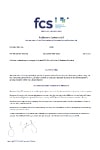
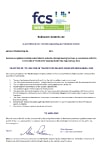
Download Radiocoms Systems Ltd FCS Certifications>
Abouts FCS
The Federation of Communication Services (FCS) represents companies who provide professional communications solutions to professional users. Our members deliver telecommunications services via mobile and fixed line telephony networks, broadband, satellite, wi-fi and business radio. Our members’ customers range from SMEs, home-workers and micro-businesses up to the very largest national and international private enterprises and public-sector users. FCS is the largest trade organisation in the professional communications arena, representing the interests of nearly 400 businesses with a combined annual turnover in excess of £45Billion.
Source – ww.fcs.org.uk
Latest News From Radiocoms
Let’s start a conversation
If you would like further information, or to discuss your requirements onsite:
Book An Appointment | Arrange A Quotation | Call 033 3939 0022


